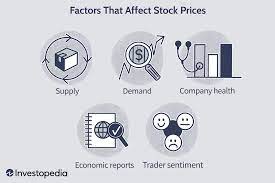In the dynamic landscape of business, various factors can influence operations and profitability. One such factor is the increase in market rates of daily life essentials. Rising prices of goods and services can significantly impact businesses, affecting costs, consumer behavior, and overall profitability. In this blog post, we will explore the effects of increasing market rates on businesses and discuss strategies to navigate these challenges effectively.

- Cost Management and Pricing: As market rates increase, businesses face higher costs for raw materials, energy, transportation, and other essential inputs. It becomes crucial to analyze and optimize your cost structure to maintain profitability. Review your expenses, identify areas for cost reduction or efficiency improvements, and explore alternative suppliers or materials. Additionally, evaluate your pricing strategy to ensure it reflects the increased costs while remaining competitive.
- Consumer Behavior and Demand: Increasing market rates can influence consumer behavior and spending patterns. Consumers may become more price-sensitive, seeking lower-priced alternatives or delaying purchases. It is essential to monitor customer preferences and adapt your marketing and product strategies accordingly. Consider offering value-added propositions, emphasizing quality, and communicating the unique benefits of your products or services to justify their higher price.
- Supply Chain Management: The impact of rising market rates is often felt throughout the supply chain. Suppliers may pass on increased costs, leading to higher prices or potential disruptions in the availability of goods and services. Maintain open communication with suppliers, negotiate favorable terms, and explore alternative sourcing options if necessary. Diversifying your supplier base can help mitigate risks and minimize the impact of market rate fluctuations.
- Operational Efficiency: To offset the effects of increasing market rates, focus on optimizing operational efficiency. Streamline processes, eliminate waste, and invest in technologies that improve productivity. By enhancing efficiency, you can control costs and maintain competitiveness even in the face of rising market rates. Automation, digitalization, and data-driven decision-making can all contribute to operational improvements.
- Customer Communication and Value Proposition: During times of increasing market rates, it is essential to communicate with your customers effectively. Keep them informed about any price adjustments and emphasize the value they receive from your products or services. Highlight factors such as quality, durability, and long-term savings that justify the price increase. Engage with customers through personalized experiences, loyalty programs, and exceptional customer service to maintain their loyalty and satisfaction.
- Collaboration and Partnerships: Consider collaborating with other businesses in your industry or related sectors to pool resources, share best practices, and leverage collective bargaining power with suppliers. Joint ventures, partnerships, and strategic alliances can help mitigate the impact of increasing market rates by optimizing costs and expanding market reach.
- Continuous Adaptation and Innovation: In a rapidly changing business environment, adaptability and innovation are crucial. Monitor market trends, stay informed about industry developments, and be proactive in adapting your business strategies accordingly. Seek opportunities for product or service innovation that can differentiate your business and provide unique value to customers, allowing you to navigate the challenges of increasing market rates more effectively.
While increasing market rates of daily life essentials can present challenges for businesses, it is possible to navigate these impacts successfully. By effectively managing costs, understanding consumer behavior, optimizing supply chains, and fostering innovation, businesses can maintain their competitive edge and profitability even in the face of rising market rates. Stay agile, adapt to changing circumstances, and proactively seek opportunities for growth and optimization in order to thrive in dynamic market conditions.
